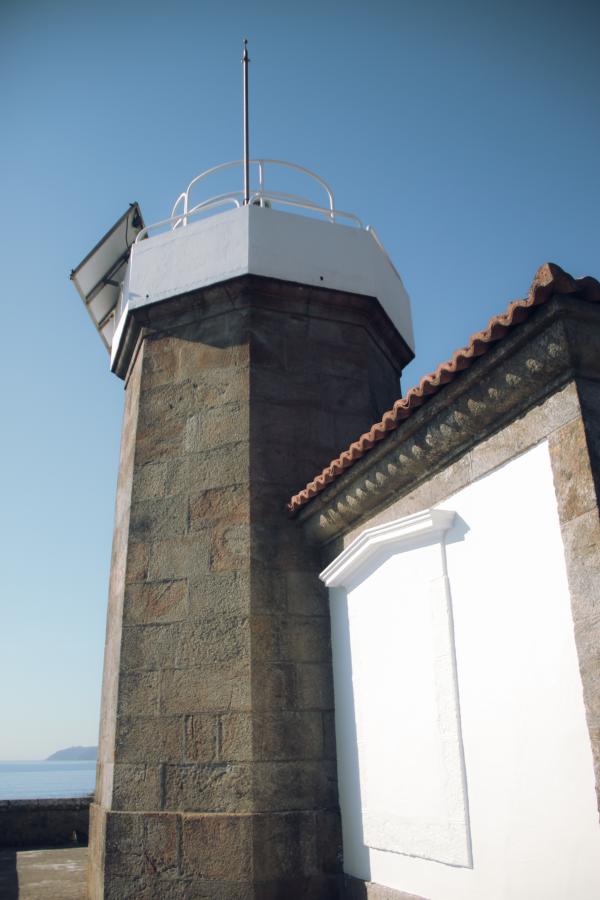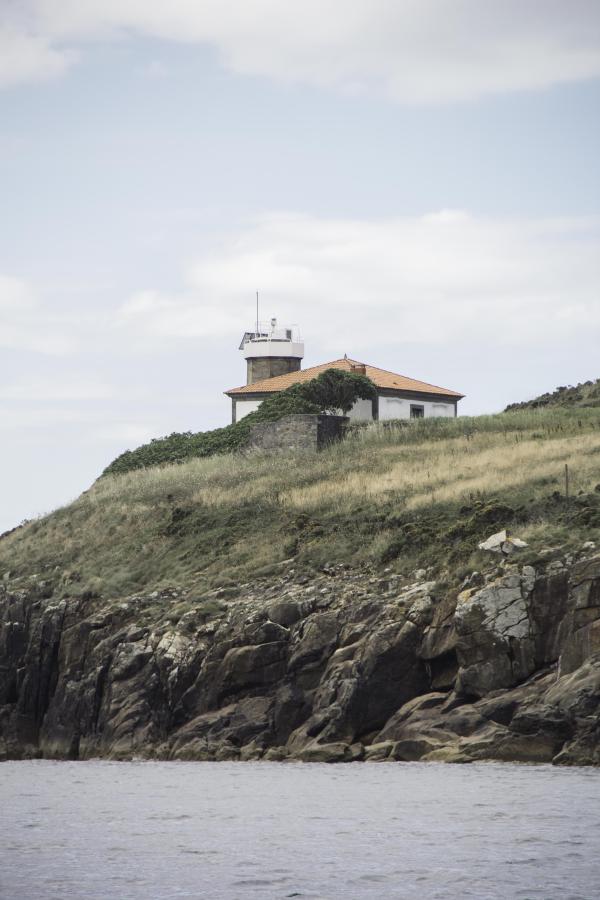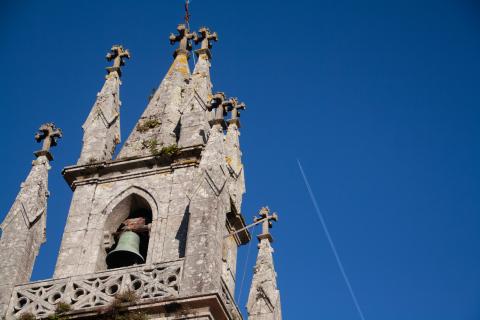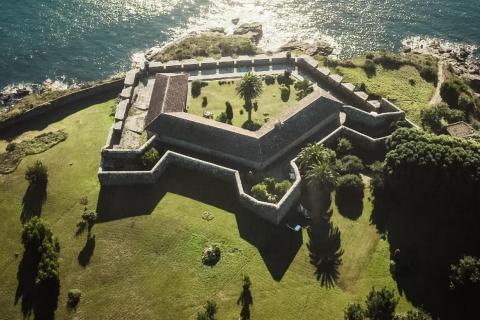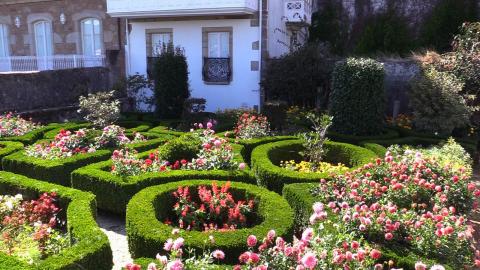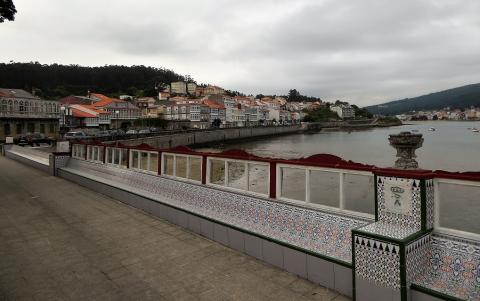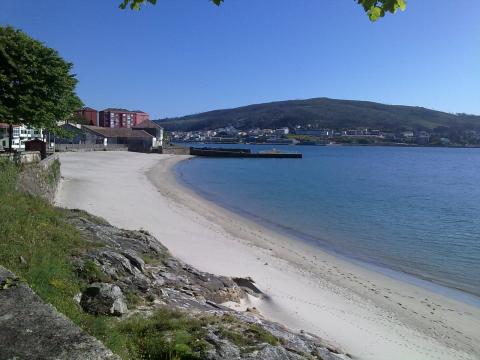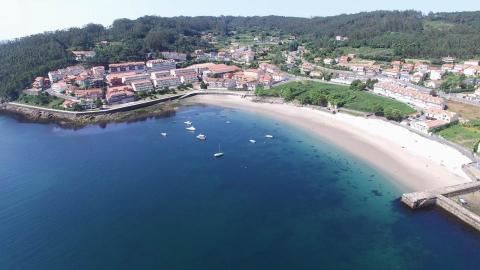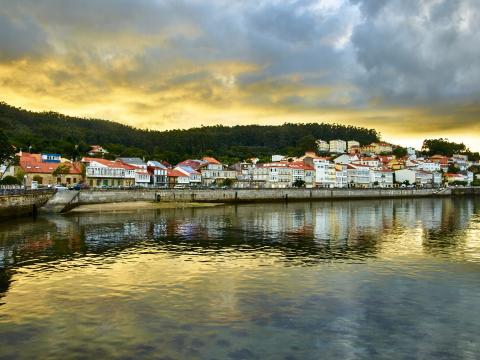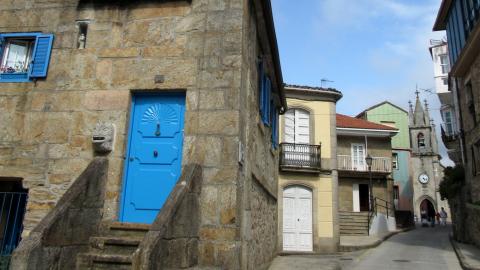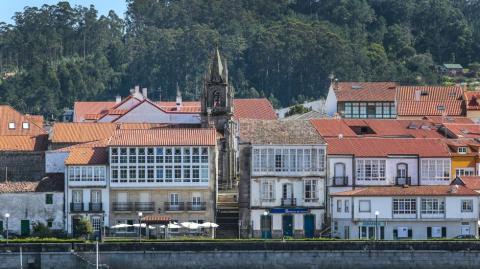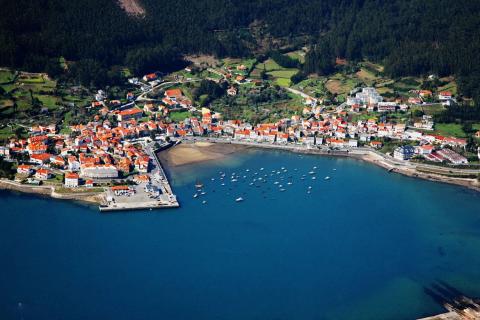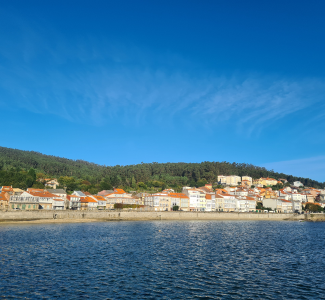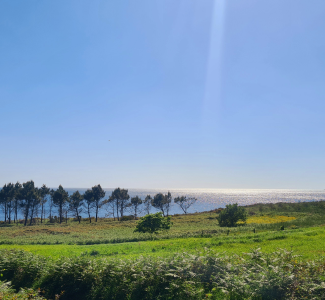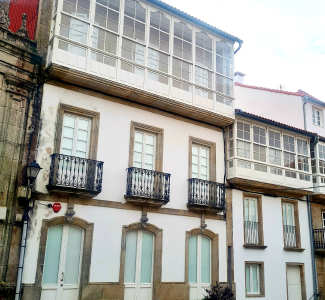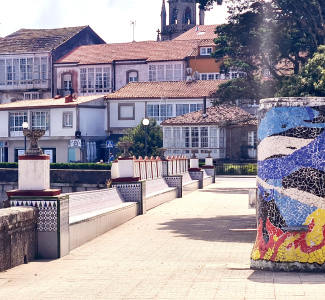What to see in Corcubión
Corcubion, land of calm and bravery
Cultural Heritage
Cultural Heritage
Cape Cee Lighthouse
Architectural heritage
Location
cape Cee 43° 55’ lat. N. E 9° 11’ long. O
Chronology
1860
Legal situation
it depends on the Port Authority of A Coruña
Ground height to light
7m
Light range
7 millas (13km)
Distinctive characteristics
3 white beams every 6 seconds
In 1847, the Lighthouse Commission decided to place a lighting point to facilitate the entry into the Corcubión estuary. The place chosen was Cape Cee. It was recommended that a small red fixed light and buoys or beacons were placed in the Carrumeiro Chico and the surrounding area. This lighthouse, of 5th order, was designated with the name of Fanal de Corcubión. In 1858, the works were put up for auction and, in the absence of bidders, the Administration took it over.
It was lit on the 31st of July 1860, with a white fixed light and a range of 8 miles in ordinary time; its focal plane was about 7 metres from the ground and 2 metres above the sea, and it also had a retro-reflector and a piston lamp for olive oil. In 1880 a single-wick oil lamp was installed.
In 1911, a set of rotating screens powered by a clock-making machine was fitted to their optical apparatus.
In 1934 it was automated, replacing the lamp with a bare flame installation with AGA scintillator. With these reforms to new appearance it would be in groups of three white beams every 6 seconds.
It is a square building with a hipped roof, raised on a stone platform protected by a small stone wall on the side facing the cliff. Attached to the south wall is a tower with a pyramid-shaped trunk and octagonal section, topped by a small balcony and a lantern without a glass dome.
